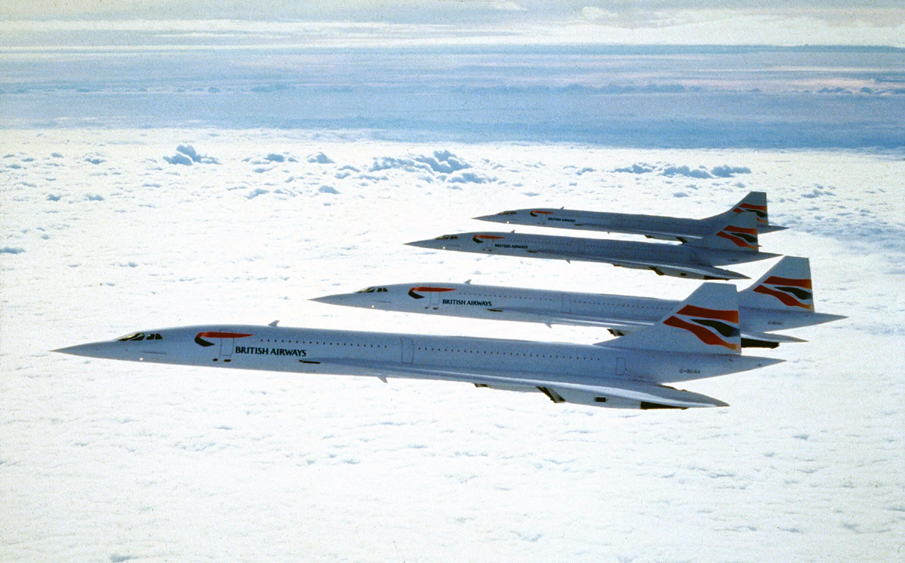Concorde's 10-year anniversary
21 November, 2013
5 min read


It was a masterpiece of engineering, a technological marvel - and the greatest financial disaster in aviation history.
But the Concorde, which was withdrawn from servive 10 years ago is sadly missed by all those who love to look skywards and dream.
See tribute video below.
The carriage of choice for the rich and famous, the Concorde was part of a world beyond the reach of most people and it was in the top five for most people’s bucket list according to a BBC poll.
Celebrities regularly forked out $20,000 for the return trip from London to New York and they included Elton John, Sting, Rod Stewart, Mick Jagger, Joan Collins, Luciano Pavarotti, Sean Connery, Robert Redford, Elizabeth Taylor, Joan Collins, Mike Tyson, Annie Lennox and Rod Stewart.
The Concorde died because its was costing too much to maintain and the number of high flyers with deep pockets was dwindling.
The British Airways chief executive Perth-born Rod Eddington told The West Australian at the time that “the number of corporate clients is 80 per cent fewer than a few years ago.”
“Corporate organisations have had to tighten their belts and thus their travel budgets,” Mr Eddington said at the time.
In the final analysis, behind the glitz and glamour, the Concorde was one project that should never have got off the ground.
It was a product of the age of “speed and sputnik“, when it seemed there were no limits to what could be achieved in the skies.
The Concorde had its commercial genesis at the Paris Air Show in 1961, when French aircraft manufacturer Sud Dassault proudly displayed a model of the Super Caravelle, which could carry 70 passengers at supersonic speed.
It sped up British efforts to produce a supersonic jet, which had started in 1956.
By March 1962, the French and British governments intervened to merge the efforts in a joint Super Sonic Transport project.
But the agreement reached in November 1962 contained no provision for a ceiling on the costs, estimated to be $414 million, nor was any review or cancellation process agreed on.
There were already serious voices of caution.
Pan American World Airways long-time adviser, Charles Lindbergh, warned of the environmental and economic problems the plane would face - well before they became major industry concerns.
Britain saw the Super Sonic Transport as its entry ticket to the Common Market.
As bait to the British, French Prime Minister Charles de Gaulle said that Britain’s commitment to Europe would be judged by its progress on the Concorde.
At different times, both France and Britain wanted to abandon the project but because of the wording of the agreement, the other would seize the opportunity to recoup its own expenditure and, of course, maintain that it wanted the Concorde to carry on.
In its original form was designed to carry up to 150 passengers 7696km at Mach 2.2 - just over twice the speed of sound.
But it was discovered that the plane would fall short of New York by almost 700km, so the plane was redesigned to carry 100.
The first Concorde to fly took off in March 1969 when options had been received for 80 Concordes from 18 airlines, including Qantas, according to a Flight International airline survey.
In the same year, British Aircraft Corporation was predicting, on the most pessimistic assumptions, sales of 225 Concordes by 1975, though this was well down on the original estimate of 500.
However, industry expert and historian the late Reg Davies claimed very little research was ever done into the market for SSTs.
According to Mr Davies, British Aircraft Corporation produced a brochure in 1970 claiming that more than 30 per cent of the market would pay first-class fares to travel on Concorde.
He notes the reality at the time was that only 7 per cent of the market was first class and it was declining.
Today, it’s less than 2 per cent, with many airlines dropping first class.
And development costs soared higher than the aircraft.
According to one estimate from the London-based Independent newspaper, the total write-off for the British and French governments was $34 billion, which works out to a taxpayer subsidy of a staggering $8000 for every passenger who ever flew on the Concorde.
By early 1973, most of the airlines had cancelled their options as fuel prices took off and noise problems became a major issue.
Only government-owned Air France and BOAC put Concorde into service at no capital cost, after complex write-off and profit-share/loss underwriting arrangements were struck.
The first commercial flight was not until January 21, 1976, when a British Airways jet flew from Heathrow to Bahrain, at the same time as an Air France jet flew to Rio de Janeiro.
Concorde was involved in one fatal crash on July 27, 2000 which claimed 113 lives.
The loss of the Air France Concorde was caused when a small piece of metal on the runway, shed by a jet that had just touched down, punctured one of the Concorde’s tyres.
The subsequent tyre burst showered debris into the fuel tanks, which sparked a fire.
The fire and debris caused the No. 2 and then No. 1 engines to fail, dooming the plane.
Concorde was grounded for more than a year and needed $41 million in modifications before it returned to service on November 7, 2001
Get the latest news and updates straight to your inbox
No spam, no hassle, no fuss, just airline news direct to you.
By joining our newsletter, you agree to our Privacy Policy
Find us on social media
Comments
No comments yet, be the first to write one.


